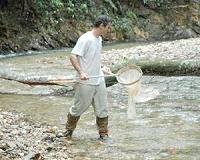| . |  |
. |
Helsinki, Finland (SPX) Feb 04, 2010 A recent study about movement of bird species during the Cold War outlines one of the perils facing an expanding global economy - along with international trade comes the potential for a significant increase in invasive species that can disrupt ecosystems. The research found that during an extended period following World War II, when most trade and travel was interrupted between Eastern Europe and its western counterparts, there were far fewer introduced bird species. "Last year, people worldwide celebrated the 20th anniversary of the fall of the Iron Curtain and the end of the Cold War," said Susan Shirley, a research associate in the College of Forestry at Oregon State University. "This signified a time of renewed freedom and opportunities for the countries of Eastern Europe. However, those new opportunities brought new challenges from an unexpected source." The problem, Shirley said, is that there's often a correlation between politics, trade and ecosystem function. "Global trade is a real concern for invasive species, and the lessons we can learn from the Cold War offer a warning flag to developing countries that are now expanding in an international economy," Shirley said. Control or eradication of invading species is extremely difficult and expensive, Shirley said, and prevention of animal importation is the only sure approach to address this problem. It relates not just to birds, which were the focus of this research, but to forest pests, fisheries, non-native crustaceans and many other species. Even though birds, in theory, need pay little attention to international borders, in fact they tend to stay in native habitats. However, they sometimes establish populations in new locales if they are brought there, Shirley said. "Traditionally we don't hear much about birds as an invasive species, but they can be," she said. "The common myna, a subtropical bird, is a generalist predator and a crop pest, and has been included on a list of the 100 worst invasive species," Shirley said. "The collard dove is a habitat generalist and has now spread all over Europe. And of even more concern, there are several species with serious impacts in other regions of the world that may be in the process of establishing populations in Europe, largely due to the escape of wild-caught pet birds." The study, published recently in the journal Biological Conservation, found that prior to the Cold War, Western Europe had 36 non-European introduced species and Eastern Europe had 11. By the time that period of international tension and restricted trade ended, Western Europe had experienced an increase to 54 non-European introduced bird species, but Eastern Europe had actually declined from 11 to five. "The isolation of the Eastern European bloc from the west during the Cold War led to a decline in the number of birds introduced, the number of introduction events and the number of bird species established," the study authors wrote in their report. In light of that, the researchers suggest that clear policies need to be established to prevent further inflow of exotic species into previously isolated regions, and warn that the problems illustrated by this phenomenon in Europe may play out in similar ways all over the world as trade expands. The unusual isolation of Eastern Europe for more than four decades provided a unique opportunity to study the effect of socio-economic and political factors on invasive species, the researchers said. In that context, eastern European ecosystems actually benefited from the isolation, scientists said, and also provide insight into how invasive species problems can be reduced with more aggressive regulation and monitoring.
Share This Article With Planet Earth
Related Links Oregon State University Darwin Today At TerraDaily.com
 Surprise Surprise Evolution Impacts Environment
Surprise Surprise Evolution Impacts EnvironmentRiverside CA (SPX) Feb 04, 2010 Biologists have known for long that ecology, the interaction between organisms and their environment, plays a significant role in forming new species and in modifying living ones. The traditional view is that ecology shapes evolution. The environment defines a template and the process of evolution by natural selection shapes organisms to fit that template. Some specialized theory, a few la ... read more |
|
| The content herein, unless otherwise known to be public domain, are Copyright 1995-2010 - SpaceDaily. AFP and UPI Wire Stories are copyright Agence France-Presse and United Press International. ESA Portal Reports are copyright European Space Agency. All NASA sourced material is public domain. Additional copyrights may apply in whole or part to other bona fide parties. Advertising does not imply endorsement,agreement or approval of any opinions, statements or information provided by SpaceDaily on any Web page published or hosted by SpaceDaily. Privacy Statement |